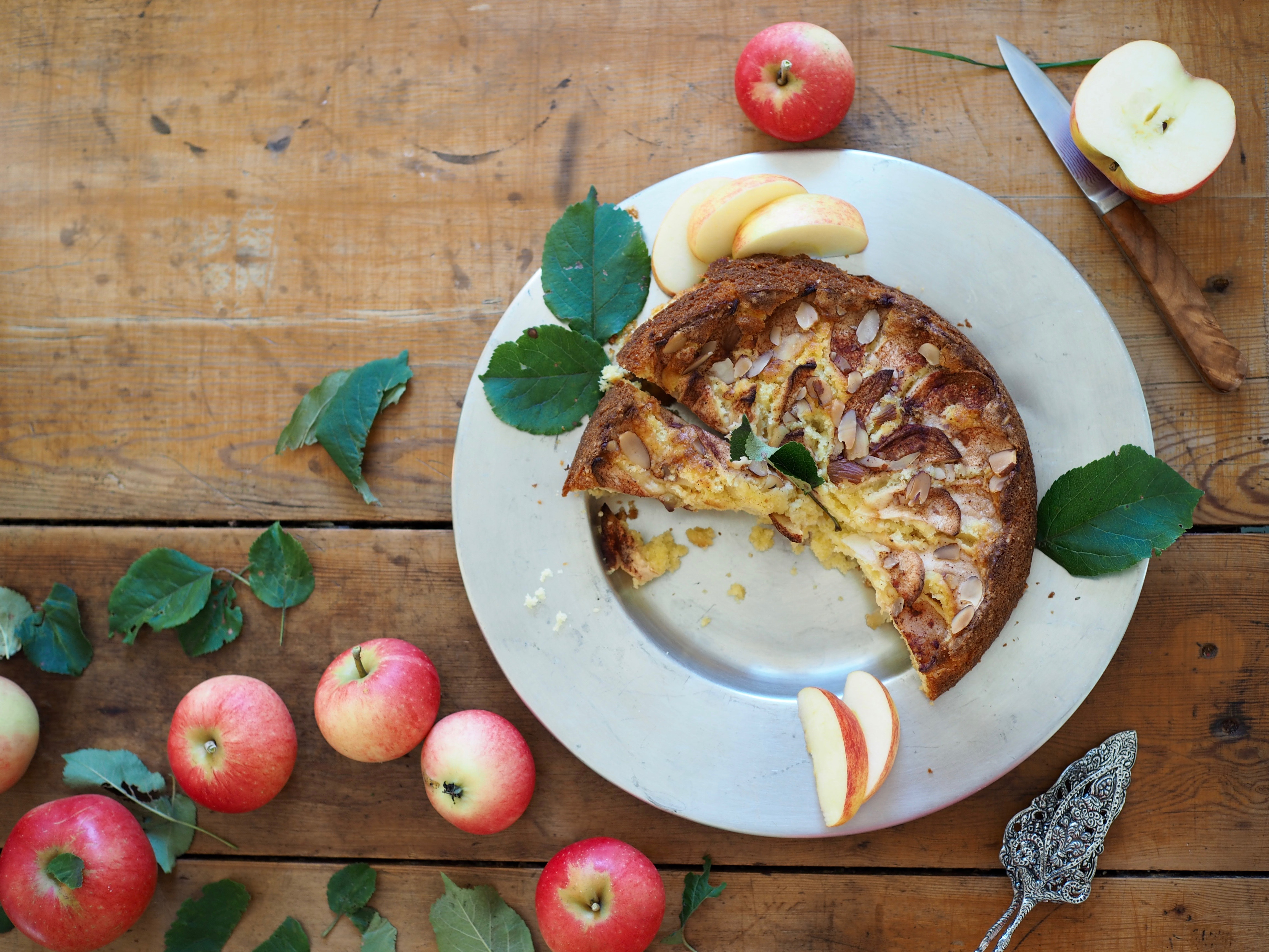
 Apple trees across the valley hang a little heavier these days, their branches full of the fruit which has been growing and ripening over the past few weeks. The ground beneath them is dotted with hues of red and green and yellow as if it were merely a reflection of the tree itself covered in the same hues. The branches hang low and graze the grass, having given way to gravity and appearing in need of having their seasonal burden lifted. And so, kids and adults alike grab baskets and bowls and pluck the fruit from the low branches and climb on ladders to reach those on the very top. It’s a joyous time, when nature’s bounty can be harvested and enjoyed.
Apple trees across the valley hang a little heavier these days, their branches full of the fruit which has been growing and ripening over the past few weeks. The ground beneath them is dotted with hues of red and green and yellow as if it were merely a reflection of the tree itself covered in the same hues. The branches hang low and graze the grass, having given way to gravity and appearing in need of having their seasonal burden lifted. And so, kids and adults alike grab baskets and bowls and pluck the fruit from the low branches and climb on ladders to reach those on the very top. It’s a joyous time, when nature’s bounty can be harvested and enjoyed.
Apples have been a part of Norway and Northern Europe for quite some time, stretching back to the Stone Age and possibly beyond. Linguistically, the word eple is common in Northern European languages. Findings from the Viking Ship, the Oseberg, revealed 54 well-preserved wild apples, which are just slightly smaller than the wild apples we have today. Much of the apples in Norway have been cultivated and have derived from the practice of grafting, or taking a branch from one tree and attaching it to a different tree so that it may heal quickly and become part of that tree. The art of grafting was quite common among monasteries in Norway following the introduction of Christianity in the 1000’s. Nursery catalogs from 1895-1902 talk about wild stems which were sold by the thousands for grafting purposes, leaving the question of just how ‘wild’ are the wild apples in Norway today.

 It is no surprise apples are an important commodity in Norway. When apple season peaks, an array of fresh and local apples and their products appear. From freshly pressed juices to soups to desserts and jams. Quite arguably, one of the most common and iconic apple dishes made during this season is eplekake, or apple cake. It seems everyone has their own recipe for eplekake, but overall Norwegian eplekake is presented as a simple sponge cake topped with slices of fresh apples and sprinkled with sugar and cinnamon, and possibly nuts. It is served with ice cream, vanilla cream or whipped cream. Oh, and coffee of course.
It is no surprise apples are an important commodity in Norway. When apple season peaks, an array of fresh and local apples and their products appear. From freshly pressed juices to soups to desserts and jams. Quite arguably, one of the most common and iconic apple dishes made during this season is eplekake, or apple cake. It seems everyone has their own recipe for eplekake, but overall Norwegian eplekake is presented as a simple sponge cake topped with slices of fresh apples and sprinkled with sugar and cinnamon, and possibly nuts. It is served with ice cream, vanilla cream or whipped cream. Oh, and coffee of course.
My version of a straightforward eplekake is simple, tasty and perfect to serve right out of the oven. The sweetness of the sponge cake is complimented with the tanginess of the apples and you get just a hint of cinnamon and a bit of texture from the brown sugar and almonds. Enjoying a slice of eplekake in the garden, in the height of autumn, is just one of life’s great pleasures.



Eplekake
(Makes 1 cake, 8 servings)
Ingredients:
- 3 eggs
- 3 dl ( 1 1/4 cup) sugar
- 150g (2/3 cup) butter, at room temperature
- 4 dl (1 3/4 cup) flour
- 1 1/2 tsp baking powder
- 1 dl (∼1/2 cup) milk
- 3-4 apples, peeled, cored and cut into thin slices
Topping
- 2 Tb brown sugar
- 1/3 cup sliced almonds
- 1 Tb cinnamon
- Couple dabs of butter (optional)
Preheat the oven to 180° C /350°F. Grease an 8-inch/20cm springform pan.
In a bowl, blend together the flour and the baking powder.
In a large bowl or kitchen mixer, mix together the butter and sugar until light and fluffy. Add the eggs one at a time. Add the flour mixture and blend together. Slowly add in the milk until everything is well blended.
Pour the mixture into the prepared springform pan. Top the mixture with the apple slices, laying them tightly next to each other and pressing them into the batter slightly as you go along. After you have covered the batter with the apples, sprinkle them with the brown sugar, sliced almonds, and cinnamon. For a little indulgence, take just a couple small dabs of butter and place them around the cake, so they will melt into the cake as it bakes.
Place in the oven and bake for around 1 hour. The top should be golden brown and you can check the cake with a toothpick to see if it comes out clean. Serve with whipped cream or ice cream for a truly luxurious dessert.
Historical sources: Digital Museum, Wiki, Skog og Lanskap


Leave a Reply